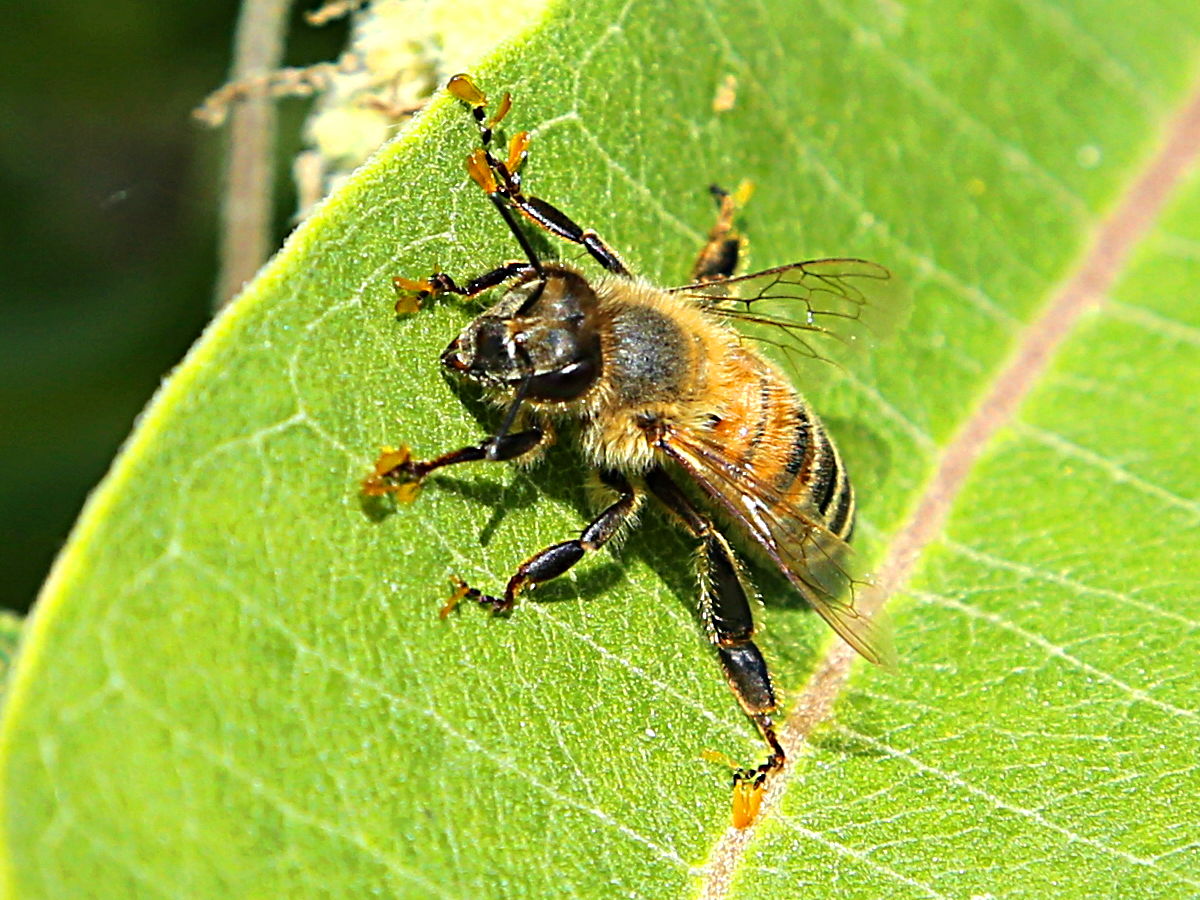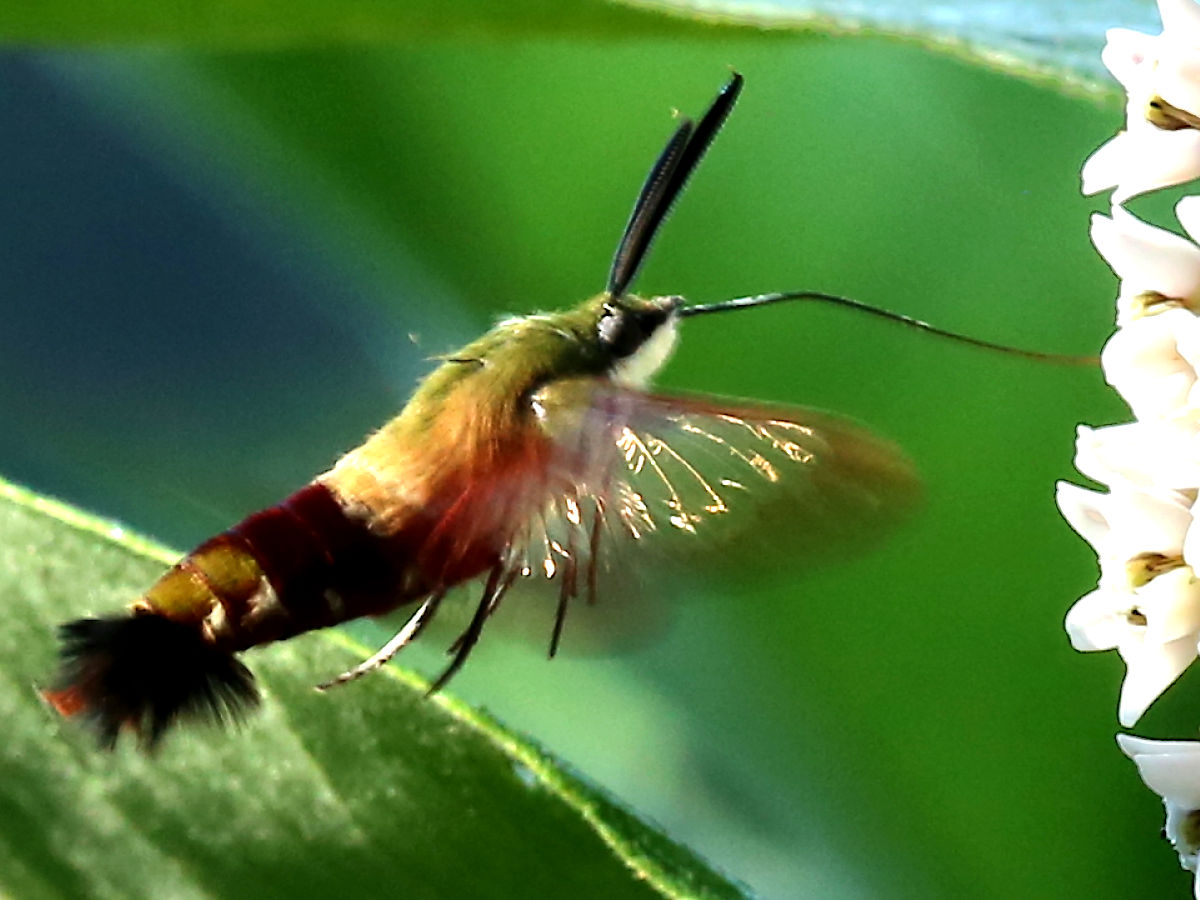
5 fused anthers and stigmas form a central "corona" atop 5 reflexed petals.
Pollen are packed into sacs called "pollinia"; pairs of pollinia hang like saddlebags within stigma chambers.
Hidden within the corona are also anther slits to receive pollinia.


When she pulls her legs out, the pollinia are carried off, and may drop down the anther slit of another milkweed blossom, thus achieving pollination.


Bald-faced Hornets may also be an unwilling pollinator.


Other pollinators such as Lesser Maple Spanworm Moth can also become trapped.
The milkweed nectar is so fragrant that insects are willing to risk life and limb harvesting the liquid, each intoxicating step potentially their last.

Honey Bee trapped in slits





